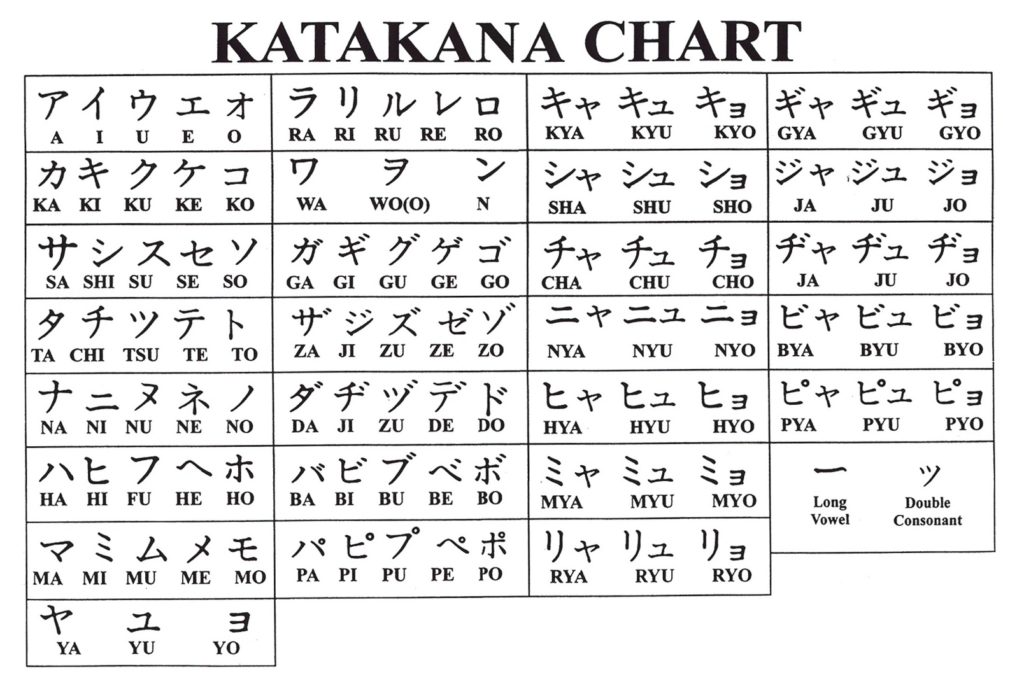The puzzle was adapted from the book “Problems from Linguistics Olympiads, 1965-1975”, MCNMO - Moscow, 2007. The editors are Roman Senkov and Tomonori Nagano.
It is purely logical and no prior knowledge of Japanese is required to solve it. Please do not search for the translations. The solution to this puzzle will be published in the next Ad Astra issue. Good luck!
The Japanese language features a distinctive writing system that incorporates three separate sets of characters: Kanji, which includes several thousand characters of Chinese origin, and Hiragana and Katakana, each consisting of 46 syllabary characters. Katakana, in particular, is utilized for the phonetic transcription of foreign loanwords, providing essential cues for the accurate pronunciation of otherwise challenging alphabetical words.

In Japanese, there are many words and entire phrases borrowed from English. Here is a list of such words and phrases:
rezonansu (レゾナンス), opuchimisuto (オプティミスト), pen (ペン), enjin (エンジン), meido in Japan (メイド・イン・ジャパン), yankī (ヤンキー), nōtobukku (ノートブック), sūpu (スープ), Nyū Yōku Taimuzu (ニューヨーク・タイムズ), sekushon (セクション), mōtā (モーター), dokutā (ドクター), chiketto (チケット), indakushon (インダクション), shokku (ショック), shoppu (ショップ), burokku (ブロック), baransu (バランス), uisukī (ウイスキー), oiru (オイル), surōgan (スローガン), raiburarī (ライブラリー), ibuningu (イブニング), bandarizumu (バンダリズム), intabyū (インタビュー), pāsento (パーセント), massāji (マッサージ), bā (バー), sutā (スター), atorakushon (アトラクション), supīdo (スピード), jānarizumu (ジャーナリズム).
Question A. Determine what these words might mean and what the corresponding English words are.
Question B. Identify how the following English words would appear in Japanese transcription: elevator, seal, yard, bolt, cook, trust, crane, knob, victor, clerk, lucky, colour, supper, error.
Hint: Japanese phonology strictly adheres to syllable patterns that typically consist of a consonant followed by a vowel. Therefore, English sounds without vowels will lead to the epenthesis (the addition of a vowel) after a standalone consonant. The vowel "u" is commonly added, but "o" is used after the consonants "t" and "d." For example, the word "stop" transforms into "su-to-pu" (with inserted vowels indicated with underline), "kick" into "ki-ku," and "strip" into "su-to-ri-pu" (with an "o" inserted after the "t").
Some Japanese vowels are elongated (longer than a regular vowel), which is usually indicated by a bar over the vowels. English diphthongs (a sequence of vowels and semi-vowels like "r" and "l") often become elongated vowels in Japanese. For instance, the English word "store" becomes "su-to-ā" in Japanese, and "stole" becomes "su-tō-ru" (again, epenthesized vowels are underlined in these examples).
Finally, Japanese does not distinguish between "l" and "r," both of which are represented by "r" in the chart above. Also, Japanese lacks a 'v' sound, which is often substituted by a "b" sound in Japanese translations.
Please send us your solutions to adastraletter@gmail.com, use "linguistic puzzle Ad Astra 2024, issue #1" as the subject line.
★ Solution of the Linguistic Puzzle 2023, issue #2 (Ad Astra 2023/2):